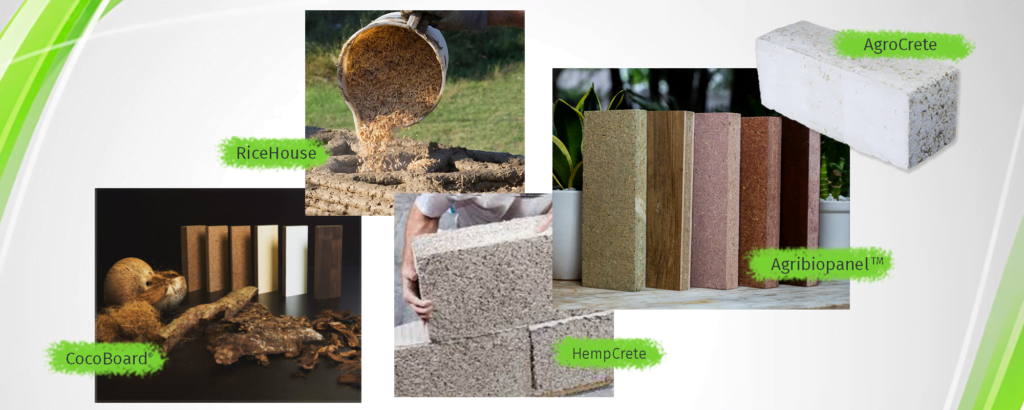Being an environmental sceptic, the building industry continues to evolve. During the mid-20th century, many innovations came along with the suburban boom. One of these was lightweight construction, which is gaining more traction today than ever.
The traditional building process uses materials with a high carbon footprint and hence a negative environmental impact. Increased awareness of environmental damage has moved the focus of governments and industry bodies to advocate the use of sustainable building materials in the construction industry.
The lightweight construction is gaining traction due to its lower embodied energy rating. Lightweight materials require lesser resources than traditional materials and are more energy efficient with a minimal carbon footprint. Moreover, they significantly reduce construction time, enabling a quicker project turnaround and saving costs.
Lightweight construction materials
Innovative building materials and lightweight technologies open new perspectives in combining reliable performance with unmatched design freedom. According to experts, lightweight materials often have low thermal mass and can thus be helpful to store passive heat or maintain coolness in almost any climate. They can also be very effective in areas with limited access and challenging design needs.
Lightweight construction may use light materials but is equally sturdy and lesser damaging to the environment. In lightweight construction, timber or light-gauge steel framing can provide structural support for a building in the long run. Non-structural components, such as autoclave aerated concrete or extruded polystyrene, can also be attached to the framework for extra strength and durability. It is thus no surprise that the construction industry is slowly drifting towards this trend.
Some lightweight construction materials in the global market are:
- High-performance Steel
- Aluminium
- Plastics
- Wood
- Ceramic Materials
- Nanomaterials
- Construction materials made of Agro-waste, such as Agribiopanels
- CocoPanels made of coconut shells

Some of the popularly used lightweight materials include:
-
Steel
- Steel support beams offer the best strength-to-weight ratios compared to other materials, such as concrete. Due to their resistance to fire, mould, and termites, steel roofing panels are becoming more popular among small home builders.
- Although steel framing has excellent strength, it is less cost-effective than other materials. For instance, steel stud construction is 30 percent lighter than wood framing.
-
Aluminium
- Aluminium is a lightweight material for framing various building components, such as windows and doors. For a small home builder, aluminium can provide a more cost-effective alternative to steel framing.
-
Wood
Wood is an excellent construction material option for regions with surplus resources, such as Scandinavian countries. For others, it may contradict the objective of being environmentally compliant.
In such cases, engineered wood comes to the rescue.
Engineered wood performs better as it has higher load-carrying abilities than solid wood of the same dimension.
They are cost-effective.
Deliver various ecological advantages such as excellent thermal performance.
Enable quick fabrication.
-
Plastics
For a long time, plastic was not considered a good choice for various building components, such as flooring, windows, and roofs. However, with the advent of fibre-reinforced plastics, structural engineers are now allowing these materials to be used for load bearing. Unlike their metal counterparts, these composite materials are not prone to corrosion.
-
Sustainable Building materials made of Agri waste:
One man’s waste is another man’s jewel, an adage that fits today’s construction industry to the T.
Several start-ups are bringing to market innovative construction materials made of agro-waste that are sustainable and have a minimal carbon footprint across their lifecycle. There are many options to choose from, depending on the requirement.
- Agribiopanels by Strawcture Eco works for all types of drywalls, false ceilings, mezzanine flooring, and furniture.
- Agrocrete offers the option for low-load-bearing construction
- Rice House provides an eco-friendly alternative to using cement
- Coco panels form great options for furniture & drywalls
Consumer Gain
As traditional materials in construction start becoming a second choice and lightweight construction materials as the primary choice, constructed structures will be environmentally friendly and healthier spaces for both inhabitation and industrial use.
How?
 Thermal Comfort
Thermal Comfort
Materials such as Agribiopanels are Thermal insulators- that help maintain the indoor temperature, keep the extremity of the weather out, and require less energy to bring the insides to the desired temperature. They lower the energy requirements for the building and also save costs on electricity bills.
 Minimal Carbon footprint
Minimal Carbon footprint
Agro-waste-based construction materials offer minimal emissions, hence making sure that the building does not become a Carbon sink by contributing to Global Greenhouse Gas emissions.
 Improved productivity
Improved productivity
Building lightweight construction can help improve productivity and well-being by making the overall ambience of the built space attractive, minimalistic and more comfortable.

Sustainable/Recyclable Construction materials made of Agri waste materials are sustainable or recyclable, refraining from adding to the landfill at the end of their lifecycle.
 Better Indoor Air Quality
Better Indoor Air Quality
Low Volatile organic compounds (VOCs) improve indoor air quality and the health factor of the space. Products like AgriBioPanels™ sequester (absorb) CO2, ensuring cleaner and healthier Indoor Air Quality.

Save costs
Quicker turnaround and longer life both go a long way in saving costs.
Challenges
Despite technological advancements, lightweight construction materials do come with some challenges:
One of these is fire resistance. Recently, a fire occurred in northern New Jersey caused by using lightweight construction materials. According to officials, the building’s open truss-style roof and the engineered wood used for its construction worsened the fire. According to experts, it is impossible to mandate non-metal construction materials due to the technological advancements in lightweight construction.
The solution then lies in using flame-retardant interior/building materials. AgriBiopanels made of straw, which contains silica, a natural fire retardant, are one of the most fire-retardant (2+ hours) construction materials in the market.
It’s important to remember that the term lightweight construction comes with an open-ended definition, which requires a more explicit explanation by the International Building Code. There are many ways that engineers can create lightweight materials, and some of these pose more risks than others. Despite the progress made in 3D model testing, more studies are needed to ensure that lightweight constructions are safer and more efficient.
As the construction industry moves toward a more sustainable future, small changes can make a big difference. Due to the increasing importance of protecting people and the environment, many companies are turning to the use of materials and capabilities that can help them achieve their goals. Lightweight construction, in this regard, shows excellent promise for the future of housing.




